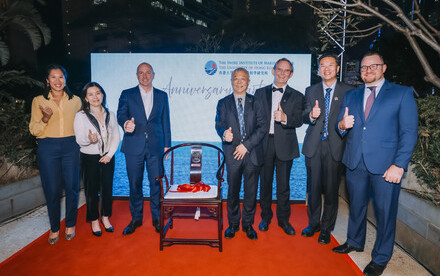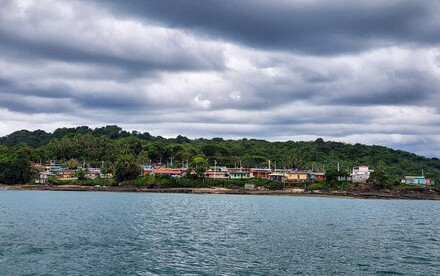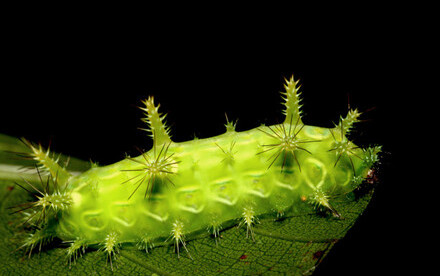11 Mar 2021
Research reveals that the sediment of Hong Kong’s Tolo Harbour contains Antibiotic Resistant Genes
Dr Shelby McIlroy holding a sample of substratum sediment
A study by HKU scientists Dr Chen Jiarui of State Key Laboratory of Pharmaceutical Biotechnology at the Department of Medicine and Dr Shelby McIlroy of the Swire Institute of Marine Science (SWIMS) and Research Division for Ecology & Biodiversity, showed that bacteria in the sediment of Hong Kong’s Tolo Harbour contain Antibiotic Resistant Genes (ARGs).
The presence of ARGs indicates that bacteria in Hong Kong’s marine sediments have evolved to become resistant to a wide range of antibiotics. Infections by such bacteria may be untreatable and potentially fatal.
Chen and McIlroy’s research is part of the Marine Global Earth Observatory (MarineGeo) Initiative, directed by the Smithsonian’s Tennenbaum Marine Observatories Network (TMON). Partners in MarineGEO, HKUs Swire Institute of Marine Science (SWIMS) one of them, are cataloguing the biodiversity of coastal marine life around the world. The aim is to understand how and why this biodiversity is changing, and the consequences this change may have for people.
McIlroy decided to focus on the very small organisms that are usually overlooked in marine biodiversity surveys – bacteria in the sand and mud on the sea bottom.
“We wanted to link biodiversity in the marine environment to human health, so we decided to look at microbiome (ecosystem of microscopic organisms such as bacteria) in the sediments.” Says McIlroy.
The scientists took samples of the sediment from 4 locations – Centre Island, deep inside Tolo Harbour, Che Lei Pai in Tolo Channel, Port Island just outside the entrance to Tolo Channel, and Tung Ping Chau in Mirs Bay. High levels of pollution in Tolo Channel are well documented.
The bacteria were identified using a DNA-based method known as “shotgun sequencing” –all of the DNA was extracted together from a sample of sediment, and then ran through the database of known bacterial DNA to produce a list of bacteria present.
In order to make a connection between these bacteria and their possible impact on human health, the researchers looked at the presence of certain genes in the bacterial DNA “soup” that was extracted from the mud. The choice fell on the genes for antibiotic resistance known as ARGs.
ARGs are genetic blueprints from which bacteria build the internal machinery that allows them to survive an “attack” by antibiotics.
In the paper, McIlroy separated the bacteria they found into 4 groups based on what “machinery” their ARGs coded for.
“Some bacteria have e-flux pumps that pump out antibiotics out of the cell as fast as they can. Other bacteria have enzymes that inactivate antibiotics by cutting them up or chemically degrading them. Other bacteria can protect parts of their DNA that antibiotics attack – by making small alterations to parts of their DNA that antibiotics recognise, or by putting a chemical compound onto that part of DNA to protect it from the antibiotic.” Explained McIlroy.
The “most worrying finding”, says McIlroy, was a clear relationship between the ARGs and pollution.
Chen explained that the sites followed a pollution gradient – the pollution increases the deeper you go from Mirs Bay into the Tolo Channel. Center Island, the innermost site, had the highest abundance of ARGs, much higher than Ting Ping Chau that is located outside Tolo, in Mirs Bay.
Another alarming finding was that the genes for the most effective antibiotic resistance mechanism – the efflux pump, were the most common. Bacteria equipped with the e-pump can use this method to get rid of any antibiotic that is attacking their cell.
ARGs found in the bacteria in Hong Kong’s marine sediments provide resistance to a wide range of antibiotics. These included penicillin, tetracyclines, and also fluoroquinolones - a group that includes ciprofloxacin, one of the most widely used antibiotics worldwide, often used for urinary tract infections.
The bacteria in the sediment develop antibiotic resistance by being subjected to prolonged exposure to antibiotics, but how do the antibiotics end up in the sea? A person taking antibiotics passes them into their faeces and then the inadequately treated sewage containing these antibiotics reaches the sea where it comes into contact with bacteria in the sediment.
The exposure then kicks off evolutionary response – bacteria adapt, finding ways to counteract the effect of antibiotics and, with generations, developing genes that give them resistance to antibiotics. For this reason, the use of antibiotics must be tightly controlled.
According to the World Health Organisation, “antibiotic resistance is one of the biggest threats to global health today.”
The Chief Medical Officer for England, Dame Professor Sally Davies, said that antibiotic resistance could “lead to the end of modern medicine as we know it” with routine operations and childbirth becoming increasingly dangerous.
The overuse of antibiotics by Hong Kongers has been well documented. A 2015 paper in Hong Kong Medical Journal concluded that: “The general public’s knowledge about antibiotics is inadequate. 30% of the public would expect or request antibiotics for a common cold.” Completely ineffective against cold and flu that are caused by viruses, not bacteria, antibiotics are sold without prescriptions in many of the cities pharmacies.
McIlroy says that even though ARGs have been found in bacteria in Hong Kong’s seas, there is no cause for over-reaction: “Pathogens and bacteria are everywhere - they occur naturally in the environment. Just because you find something (like antibiotic-resistant bacteria), it does not mean you are in an outbreak situation.”
However, she says that the results of the research mean that the problem must be addressed: “Clearly, there are issues with water quality that have implications for human health. We are now expanding this work across the wider breadth of Hong Kong.”
Article by Dr Pavel Toropov from Research Division of Ecology and Biodiversity and School of Biological Sciences
| Dr Mcllroy collecting sediment samples at Tung Ping Chau | Dr Shelby McIlroy collecting samples amonst the corals at Tung Ping Chau where the pollution was least and the levels of ARGs the lowest |







